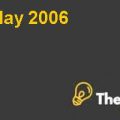
Four Star Industries Singapore, Matching Supply With Demand Case Solution
The Four Star Industries case study is a great real life example for the perception of Demand and Supply. The case reflects the importance of the forecasting of manufacturing efficiency before the introduction of products or product lines. The Utilization of manufacturing resources is an important tool for Four Star Industries in order to meet its demand and supply for a variety of products introduced by them.
Define the problem/opportunity
Four Star Industries Private Limited is a family owned company. Neo Gim Sin and his wife founded the company in 1966 in order to produce spring mattresses. Initially, the company made mattresses by hand. Moreover, Four Star Industries started its operations with only five employees.
In addition, with the increasing changes in the environment and technology, the company imported mattress making machinery from Europe in order to increase its productivity and quality of mattresses. New machinery helped Neo Gim Sin in increasing the company’s productivity ten times and also increased the quality of mattresses, since the feedback from customers was positive.
Gim Sin was very much focused on the quality of the products and the productivity of the company. Gim Sin was very responsive to the changes in the market and adjusted the firm’s manufacturing and product development in accordance with the market trends. He adapted the trend of pocketed spring mattress (PSM) and was awarded the Grand Prix from EDICON for the quality of PSMs.
Four Star Industries restricted its focus solely on the local mattresses market of Singapore. Neo Sia Meng joined Four Star Industries as a Director in 1996. In 2002, he was given the charge of the whole family business as an Executive Director. Four Star Industries was facing some internal and external problems.
The Problems faced by the Four Star Industries includes its inability or inefficiency o to match the demand and supply for the mattresses in the Singaporean market, which reflects the decrease in sales of the company. The Company has increased its mattress production from 500 at the time of its origin to 35,000 in 1989.
The increase in the production was done accordingly by viewing the market demand for mattresses. An increase in production causes the problem of high inventory. The Company’s sales were recorded about $9 million in the year 1989, which decreased to $6 million in 2002. The decrease in the sales resulted in the excess of inventory, which reflects that Four Star Industries had unsold products in the inventory.
However, the Stock Keeping Unit of Four Star Industries increased from 13 in the year 1996 to 230 in the year 2003. The excess inventory also generated the problem of inventory holding, which resulted in lack of the company’s ability to process new orders, as there is a shortage of available space in the inventory.
The number of suppliers for the mattresses was restricted to three in 90s. However, foreign players were entering the Singaporean market of mattresses. With the increase in the foreign suppliers, the competition in the local market was on the rise and by the year 2002, the number of suppliers reached to an intense base....................
This is just a sample partial case solution. Please place the order on the website to order your own originally done case solution.













